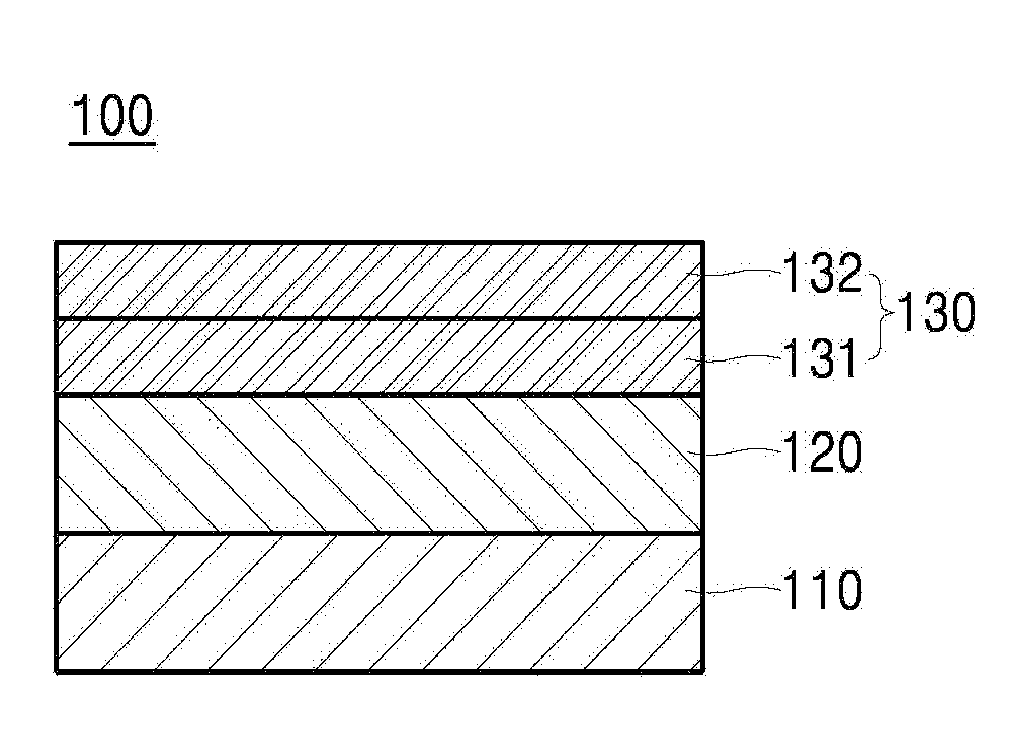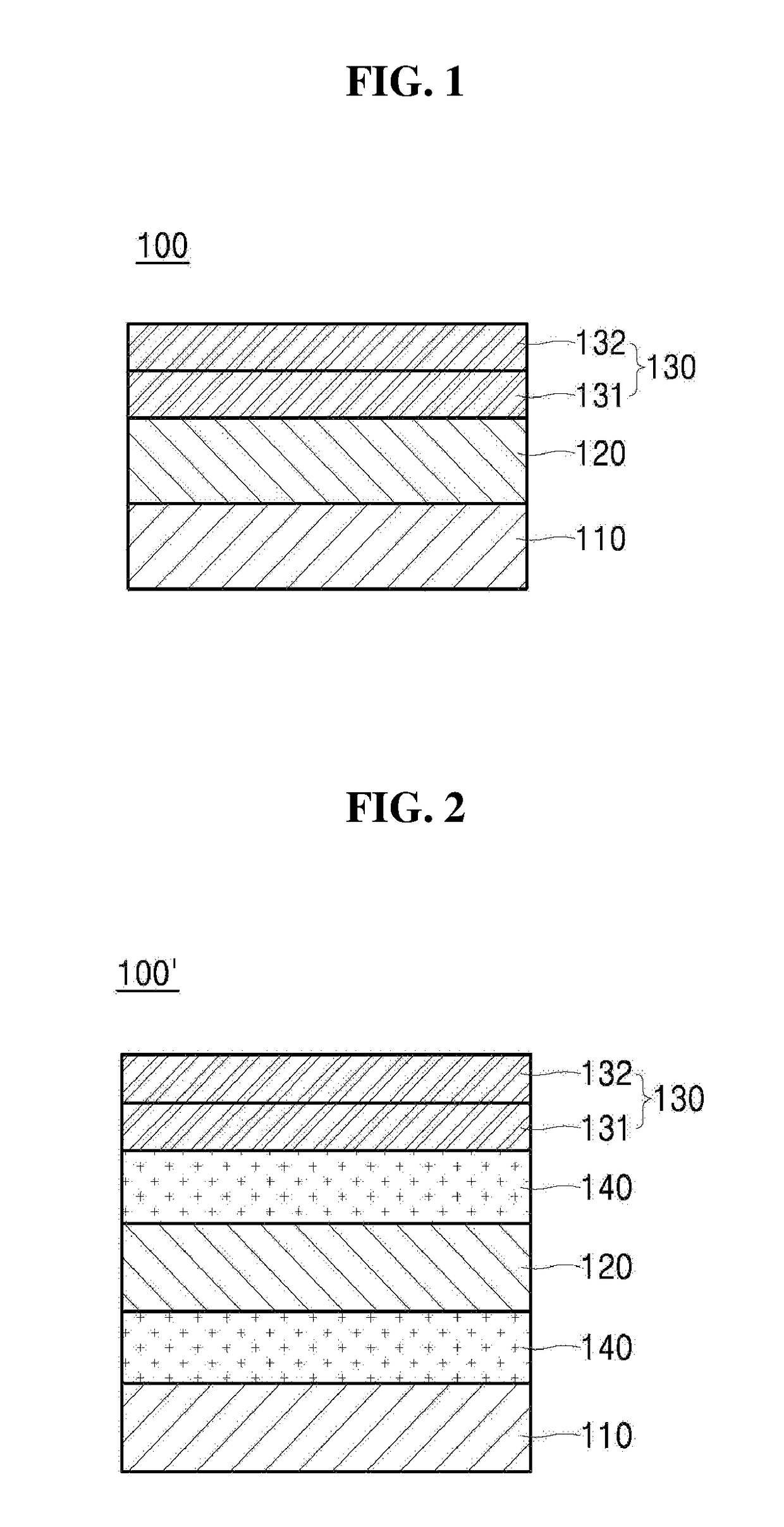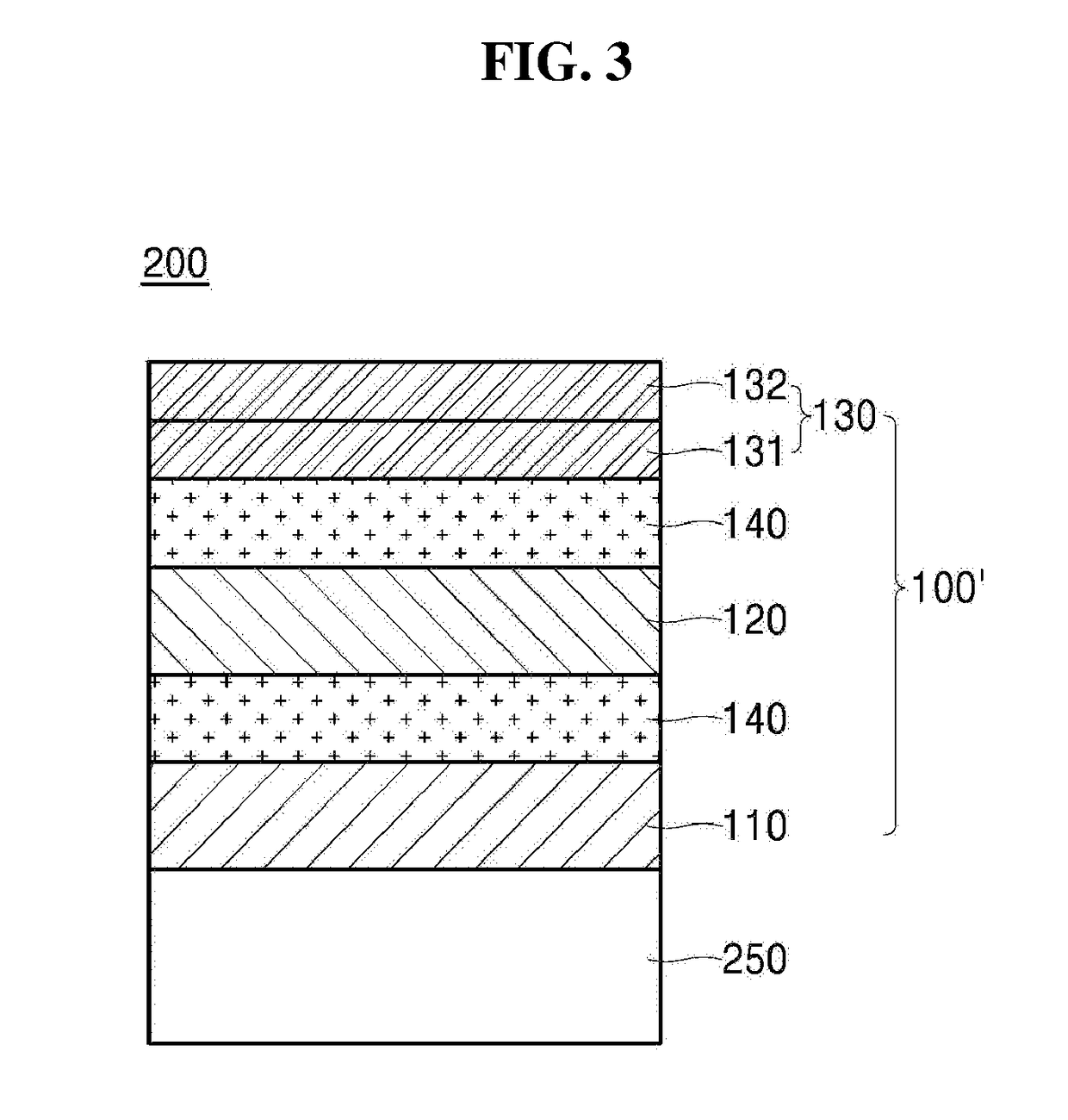Low-emissivity coating and functional construction material for window/door comprising low-emissivity coating
- Summary
- Abstract
- Description
- Claims
- Application Information
AI Technical Summary
Benefits of technology
Problems solved by technology
Method used
Image
Examples
example 2
Further Including Deposition Auxiliary Layers
[0075]A first dielectric layer having a thickness of 30 nm was formed on a transparent glass substrate having a thickness of 6 mm by depositing titanium oxide under argon / nitrogen (80 vol % of argon, 20 vol % of nitrogen) atmosphere, the titanium oxide having a refractive index of 2.4 at a wavelength of 550 nm. Subsequently, a deposition auxiliary layer having a thickness of 10 nm was formed on an upper surface of the first dielectric layer by depositing zinc aluminum oxide under argon / oxygen (60 vol % of argon, 40 vol % of oxygen) atmosphere, and a low-emissivity layer having a thickness of 7 nm was formed on an upper surface of the deposition auxiliary layer by depositing Ag under 100% of argon atmosphere, and a deposition auxiliary layer having a thickness of 10 nm was formed on an upper surface of the low-emissivity layer by depositing zinc aluminum oxide under argon / oxygen (60 vol % of argon, 40 vol % of oxygen) atmosphere. Subsequen...
PUM
| Property | Measurement | Unit |
|---|---|---|
| Thickness | aaaaa | aaaaa |
| Thickness | aaaaa | aaaaa |
| Thickness | aaaaa | aaaaa |
Abstract
Description
Claims
Application Information
 Login to View More
Login to View More - R&D
- Intellectual Property
- Life Sciences
- Materials
- Tech Scout
- Unparalleled Data Quality
- Higher Quality Content
- 60% Fewer Hallucinations
Browse by: Latest US Patents, China's latest patents, Technical Efficacy Thesaurus, Application Domain, Technology Topic, Popular Technical Reports.
© 2025 PatSnap. All rights reserved.Legal|Privacy policy|Modern Slavery Act Transparency Statement|Sitemap|About US| Contact US: help@patsnap.com



